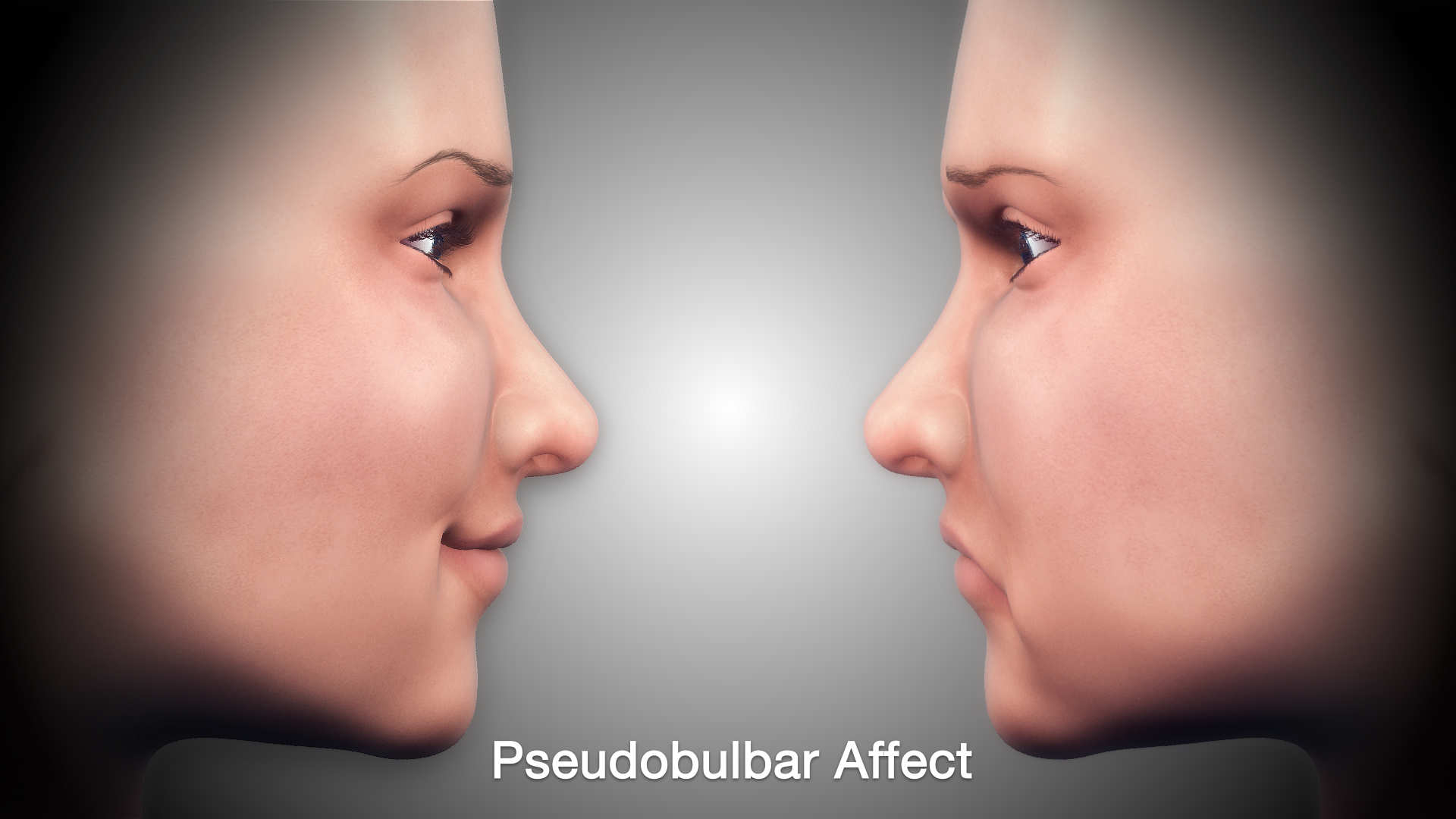Pseudobulbar affect or PBA is a medical condition in which the patient has emotional outbursts of laughing or crying without any kind of triggering. It is also referred to as pathological crying or laughing. This happens when part of the cerebellum is damaged by lesions or nerve issues. The cerebellum is the rear part of the brain which controls human emotions and responses to various situations, by communicating with the cerebral cortex or the frontal part.
This condition disrupts the communication between the cerebellum and cerebral cortex, resulting in emotional outbursts. It is eventually perceived as short-circuiting of the brain, also referred to as disinhibition. A big chunk of the population is affected by the PBA.

Symptoms
The best identification signs or symptoms of the PBA are unfitting emotional responses or sudden emotional outbursts. It is also referred to as emotional incontinence, which can cause patients to laugh at an unpleasant condition, or weep at a comical incident.
These emotional outbursts are involuntary and uncontrollable, which are often exaggerated and have no connection with the patient’s emotional state. In most of the cases, these outbursts are incongruent with the underlying mood of the patient. These episodes usually occur anytime, with the emotional state being normal between the episodes.
It is generally mistaken with the depression or depressive state as the pseudobulbar affect involves crying mostly. These episodes are usually shorter in duration, while in depression the emotional turmoil and sadness stay longer. Other notable features that help to distinguish PBA with depression are sleep disturbances and sudden loss of appetite. But depression is common among the patients with PBA.
People suffering from Multiple Sclerosis (MS) are also more prone to getting affected by the PBA. Identifying symptoms of PBA in patients is quite complex as it requires a great deal of attention towards sudden emotional responses.
Causes
PBA appears in people with neurological condition or injuries such as
- ALS or Amyotrophic lateral sclerosis
- MS or Multiple sclerosis
- Parkinson’s disease
- Alzheimer’s disease
- Traumatic brain injury
- ADHD or Attention deficit hyperactivity disorder
- Grave’s disease
As per medical resources, it is assumed that PBA is associated with the injuries in the neurological pathways, which are responsible for the effect and regulation of external expression of emotion. People who have a history of stroke are more prone to getting affected by PBA.
Treatment
Dysfunction within the brain is responsible for the occurrence of PBA, although by adopting certain habits and lifestyle changes, the adverse effect can be significantly reduced. Through basic relaxation techniques recommended by the physician, the duration of episodes of PBA can be curtailed or simply averted. Some of the popular techniques recommended to PBA patients are:
- Deep breathing
- Yoga
- Music and art therapy
- Meditation
One of the medications prescribed by the doctors and physicians to the PBA patients for improvement of the symptoms is Nuexdeta, which is the only drug that is approved by the FDA to treat PBA. The drug targets a chemical in the patient’s nervous system and is synthesized for PBA patients with MS and several other conditions. It is mixed with dextromethorphan, a cold suppressant, and quinidine, a drug used for the treatment of heart arrhythmia.
Sometimes doctors also prescribe medicines that are used to cope up with depression and mental health problems. Some of them include:
- Amitriptyline like Elavil
- Citalopram like Celexa
- Fluvoxamine like Luvox
- Fluoxetine like Prozac
The drugs used for treatments have notable side-effects; hence these drugs should be taken after consulting a medical professional. It is also important to realize that PBA in a patient can occur with or without depression.
Disclaimer: The information in no way constitutes, or should be construed as medical advice. Nor is the above article an endorsement of any research findings discussed in the article an endorsement for any of the source publications.








